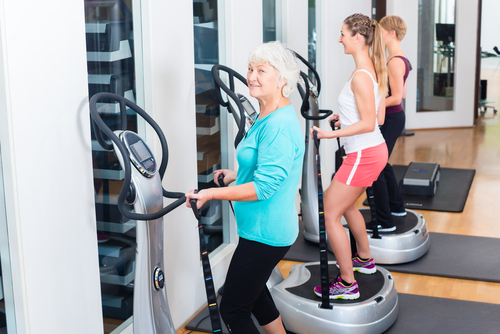Weekly Multi-Modal Exercise Program May Benefit Parkinson’s Patients, Study Says

A once-a-week multi-modal exercise program can improve and preserve motor function and cognition in Parkinson’s patients, according to a recent study.
Results of the study were presented in a session, “Can a Weekly Multi-Modal Exercise Class Preserve Motor and Non-Motor Function in Parkinson’s?” at The Physiological Society‘s recent early career conference, Future Physiology 2019: Translating Cellular Mechanisms into Lifelong Health Strategies.
Parkinson’s is a chronic neurodegenerative disease that can make it difficult for patients to lead an active lifestyle. Previous studies have shown that single modality exercise — which refers to a single type of exercise — can improve and help maintain both cognitive and physical function in those with Parkinson’s.
However, multi-modal exercise — such as circuit training plus cognitive training — may carry more benefits.
To date, a few studies have evaluated the long-term consequences of regular multi-modal exercises in Parkinson’s patients.
In the study, researchers at the University of Kent established a weekly community-based multi-modal exercise regimen for Parkinson’s patients and assessed the effects of this program on physical function, cognition, and well-being over a period of one, two, and three years.
A total of 25 patients participated in the study, which included 20 men and five women (average age of 64 years) with mild-to-moderate Parkinson’s disease. They attended a 60-minute multi-modal group exercise session weekly for over a year.
Results were compared to an aged-matched group of 20 healthy older adults and 20 Parkinson’s patients who did not exercise.
Several health and functional assessments were completed at the beginning of the study and then every four months for three years. Physical function was assessed using four tests: the six-minute walking test, timed up and go, bilateral grip strength, and 1-minute sit-to-stands.
Additionally, researchers assessed the participants’ cognitive function (using the Clock Drawing Test, Trail Making Test A and B, and the Mini-Mental Parkinson’s or MMP test), and quality of life (using the Older People’s Quality of Life Questionnaire).
At baseline, no health-related differences were reported between the groups. For patients who participated in the exercise regimen, the scores for the six-minute walking test (which measures the distance walked over six minutes), timed up and go (which determines fall risk and measures the progress of balance, sit to stand, and walking), and bilateral grip strength (which measures the strength of the hand and forearm muscles) did not significantly decrease over one, two, or three years.
However, the number of 1-minute sit-to-stands (STS) — a method to assess exercise capacity and physical condition — increased during one year between baseline (STS = 21) and after the first four months (STS = 23). This was also true for the MMP scores, which increased between baseline (MMP = 26.67) and after eight months (MMP = 29.38).
While no other significant changes in health, cognition, and physical function were observed, there was also no decline in these parameters, and exercise seemed to reduce the difference in timed up and go, bilateral grip strength, and STS scores between Parkinson’s patients and healthy older adults after one year.
Additionally, patients who did not participate in the exercise regimen had lower scores for the six-minute walking test, timed up and go, and STS compared to healthy older adults.
“A once-a-week multi-modal exercise program for [Parkinson’s disease] showed an improvement in STS and MMP scores and no other significant changes (i.e. no decline) in health, cognition and physical function over 1, 2 and 3 years,” the researchers wrote.
“That functional and cognitive performance were slightly increased or maintained is a positive outcome given the progressive nature of Parkinson’s,” they said.
Anna Ferrusola-Pastrana, a researcher involved in the study, said in a press release: “Finding the right set of exercises, both cognitive and physical, to improve Parkinson’s treatment is an important step towards giving Parkinson’s patients a better quality of life. This research is working towards honing this set of exercises, which can then potentially be performed by patients, with or without assistance at home.”






